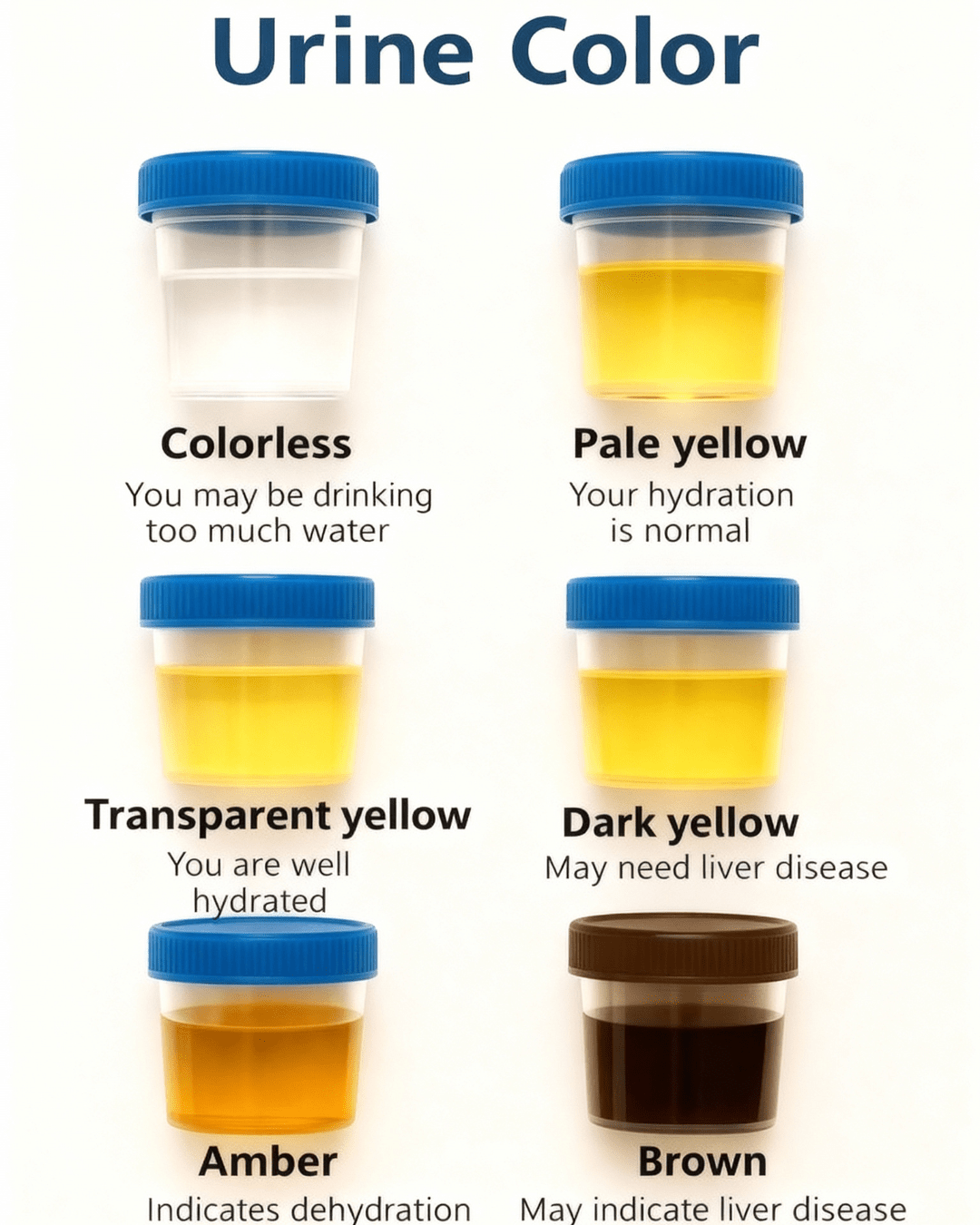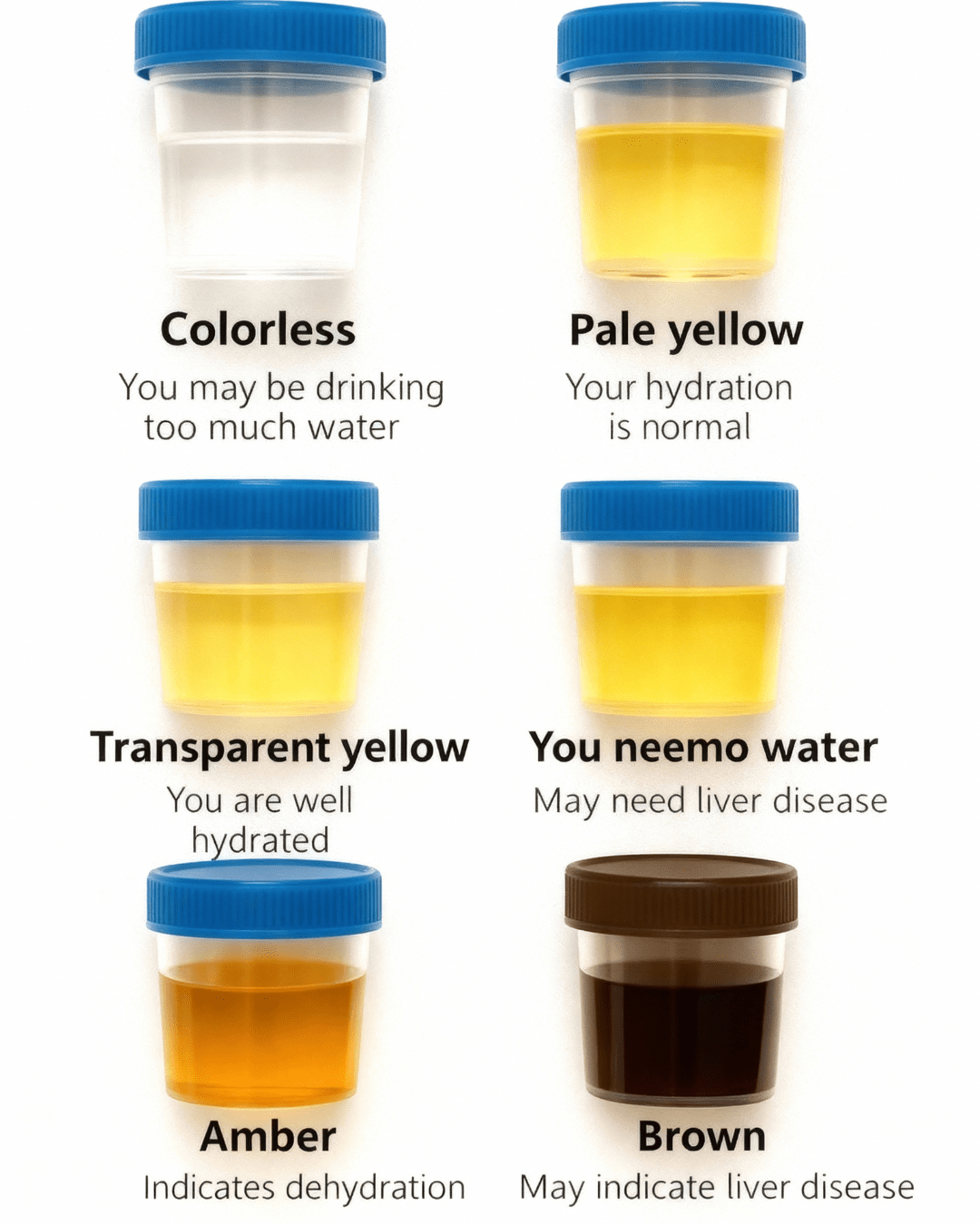What if the secret to understanding your health was as simple as glancing into the toilet bowl each morning? Imagine your urine color acting as a personal health dashboard, quietly signaling everything from hydration levels to potential medical concerns. Far from being just waste, your urine’s hue offers a fascinating glimpse into your body’s inner workings—revealing hydration status, organ function, and even early warnings of trouble. Curious to unlock the hidden messages your body is sending? Let’s dive into the captivating world of urine color and discover what it means for your well-being today.

🩺 Why Urine Color Holds the Key to Your Health
Your urine is more than a routine bodily function—it’s a vital health indicator. Its color is influenced by factors like hydration, diet, medications, and underlying conditions. Typically, your kidneys filter waste and excess water, with pigments like urobilin (from bile) giving urine its characteristic shades. Changes in color can reflect hydration levels, liver function, or even the presence of blood or infection. By paying attention to these subtle shifts, you can gain valuable insights into your body’s needs and catch potential issues before they escalate.
💧 Decoding Urine Colors: What Your Body Is Saying
Let’s explore the spectrum of urine colors and what they might mean for your health. Each hue tells a unique story, empowering you to take charge of your wellness.
💦 Pale Yellow to Clear: The Sign of Perfect Hydration
Pale yellow or clear urine is the gold standard of health. This color signals that your body is well-hydrated, with your kidneys efficiently flushing out waste without retaining excess water.
What it means: You’re drinking enough fluids, likely 6–8 glasses of water daily, keeping your system balanced. Enjoy this vibrant sign of good health, but don’t overdo it—excessively clear urine can indicate overhydration, which may dilute essential electrolytes.
🟡 Dark Yellow: A Gentle Hydration Reminder
A deeper yellow hue suggests your body might need more water. This color occurs when your kidneys concentrate urine to conserve fluid, often due to mild dehydration.
What it means: Increase your water intake, especially if you’ve been active or in a warm climate. Pair it with hydrating foods like cucumbers or oranges to restore balance and keep your kidneys happy.
🟤 Amber or Honey-Colored: A Warning to Act
Amber or honey-colored urine is a stronger signal of dehydration. This darker shade indicates your body is holding onto water, concentrating waste products more than usual.
What it means: Sip water immediately and monitor for other symptoms like dizziness or dry mouth. Chronic amber urine could strain your kidneys, so prioritize hydration to prevent long-term issues.
🟢 Green or Blue: A Rare and Curious Clue
Green or blue urine is uncommon and often linked to dietary choices or medications. Foods like asparagus or artificial dyes, as well as certain drugs, can tint your urine these vibrant colors.
What it means: If you’ve eaten colorful foods or started a new medication, this is likely harmless. However, persistent green or blue urine without an obvious cause warrants a doctor’s visit to rule out rare infections or liver issues.
🔴 Pink or Red: A Startling Signal
Seeing pink or red in your urine can be alarming, but it’s not always a crisis. This color may stem from foods like beets or berries, or it could indicate blood—a condition called hematuria.
What it means: If you’ve enjoyed red-pigmented foods, wait a day to see if the color fades. Persistent red urine, especially with pain or clots, could signal kidney stones, urinary tract infections, or more serious conditions like bladder issues—consult a healthcare provider promptly.

🟣 Brown or Cola-Colored: A Serious Red Flag
Brown or cola-colored urine is a concerning sign, often linked to liver or kidney problems. This shade can result from blood breakdown products or severe dehydration affecting organ function.
What it means: Pair this with symptoms like jaundice, fatigue, or abdominal pain, and it’s time to seek medical attention. Early detection of liver disease or muscle injury could be life-saving, so don’t ignore this warning.
🟤 Cloudy or Milky: An Infection Alert
Cloudy or milky urine often points to an infection or excess minerals like phosphates. It may also indicate the presence of pus or bacteria in the urinary tract.
What it means: If accompanied by burning during urination or frequent urges, it could be a urinary tract infection. Drink plenty of water and see a doctor if symptoms persist beyond a day or two.
🩺 What Influences Urine Color Beyond Hydration
While hydration is a primary factor, other elements can shift your urine’s appearance:
- Diet: Beets, carrots, or blackberries can temporarily tint urine, adding a fun twist to your daily check.
- Medications: Antibiotics, laxatives, or vitamins (like B vitamins) can alter colors, so review any new prescriptions.
- Exercise: Intense workouts may cause brown urine due to muscle breakdown, a condition called rhabdomyolysis.
- Health Conditions: Diabetes, liver disease, or kidney issues can leave distinct color signatures, making regular monitoring key.
Understanding these influences helps you distinguish between normal variations and potential health concerns.
💡 How to Monitor Your Urine for Better Health
Turning your urine color into a health tool is simple and empowering. Here’s how to stay proactive:
- Check Daily: Glance at your urine each morning—first morning urine is often the most concentrated and revealing.
- Track Changes: Note any persistent color shifts alongside symptoms like pain or fatigue to spot patterns.
- Stay Hydrated: Aim for 8–10 cups of water daily, adjusting based on activity and climate.
- Balance Your Diet: Include hydrating fruits and veggies while limiting artificial dyes or excessive supplements.
- Seek Advice: If colors linger or worsen, consult a healthcare professional for peace of mind.

⚠️ When to Seek Medical Help
While most urine color changes are benign, certain signs demand attention. Contact a doctor if you notice:
- Persistent red, brown, or cloudy urine lasting more than a day
- Accompanying symptoms like fever, pain, or swelling
- Sudden changes without dietary or medication explanations
Early intervention can address issues like infections, kidney stones, or liver problems before they escalate.
🌿 Why Urine Color Is Your Body’s Hidden Messenger
Your urine is a silent storyteller, offering clues to your hydration, diet, and overall health without a single word. Unlike complex medical tests, this daily signal is free, immediate, and accessible to everyone. By tuning into its colors, you’re taking a proactive step toward wellness, catching potential problems early and celebrating when your body is in balance.
Imagine waking each day with the confidence that your body is communicating clearly—and that you know how to respond. Whether it’s drinking more water for a pale yellow glow or seeking help for an alarming hue, you hold the power to act. This natural health check is a gift, empowering you to live healthier and longer.
💧 Take Charge of Your Health Today
Your urine color is more than a curiosity—it’s a window into your body’s needs and a call to action. From the reassuring pale yellow of perfect hydration to the warning signs of red or brown, each shade offers a chance to adjust your lifestyle or seek care. Picture yourself thriving with hydrated, healthy kidneys and a body in harmony, all because you paid attention to this simple signal.
Don’t wait for symptoms to worsen. Start monitoring your urine color today, embrace the insights it provides, and make small changes to support your well-being. Whether it’s sipping more water, tweaking your diet, or consulting a professional, every step brings you closer to optimal health. Your body is talking—listen now and unlock a healthier, happier you.






